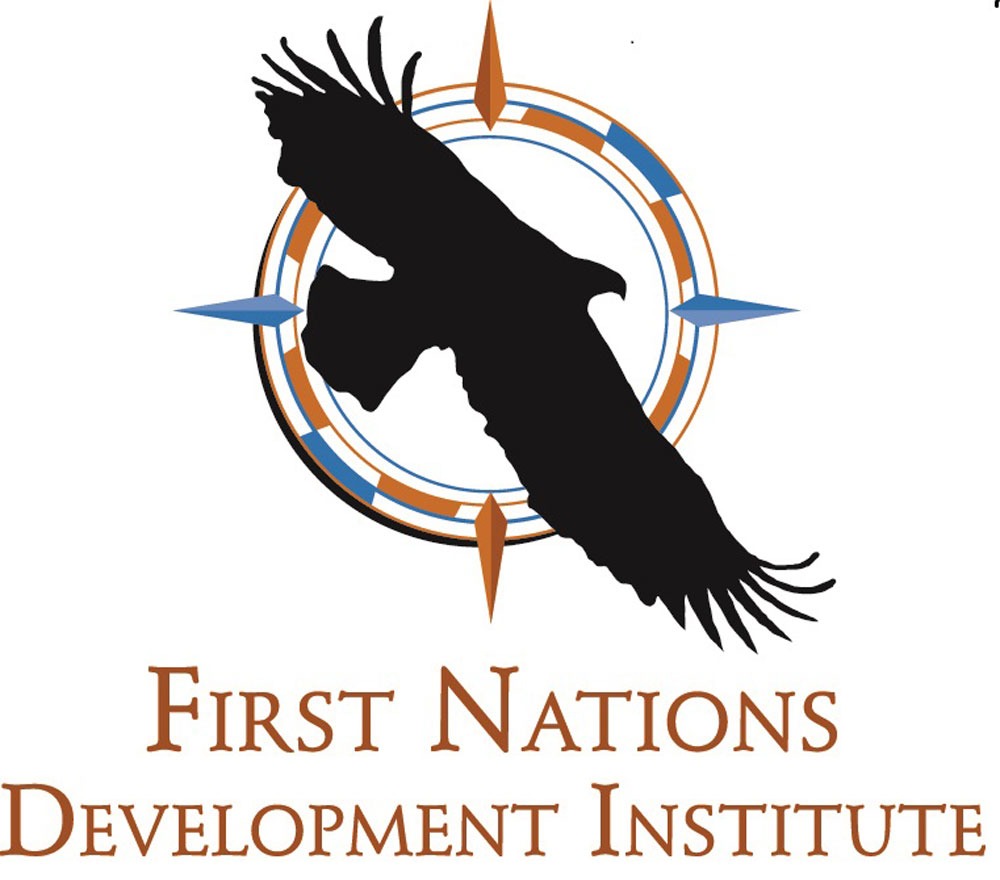
This article is the second in a series of articles that NPQ, in partnership with First Nations Development Institute (First Nations), will publish in the coming weeks. The series will highlight leading economic justice work in Indian Country and identify ways that philanthropy might more effectively support these efforts.

How does one describe the role of a Native community development financial institution (CDFI)? I sometimes say that our job at Four Bands Community Fund, the CDFI where I have worked for the past decade, is not so much about economic development, but nation building. At the end of the day, that’s why we do what we do.
It’s a point worth emphasizing. I am a citizen and enrolled member of the Cheyenne River Sioux nation. We are a Lakota community of about 18,800 people living on 4,267 square miles, including the small 5,000-person town of Eagle Butte, and are a sovereign nation. And we view the world from a very different lens than mainstream US society.
In the US, diversity is celebrated in theory, but the practice is often quite different. Some readers might remember a moment in 2015, when the story of “the Racist Soap Dispenser” went viral. This viral video featured a Black hotel guest who was attending DragonCon in Atlanta trying to get soap from an automatic soap dispenser, but the soap dispenser could not read non-white skin pigmentations. The only way for the man to trigger the soap dispensing process was for him to cover his hand with a white paper towel. What does this tell us about US society?
This experience reminds us that even goods and services in the economy are white centered and white dominated. The white-centered nature of science and technology is replicated across the US, including the ways in which we think about capital and access to capital. How was this racist soap dispenser created, and how did it make its way into the bathrooms of a major international hotel chain without testing this product with people of diverse skin pigmentation?
Quite simply, the racist soap dispenser was created by a homogenous group of product developers who sat around the table and designed a soap dispenser, a useful metaphor for how the economy overall has been constructed.
Understanding Structural Inequities in Capital Access in Indian Country
Each period of Native American history is riddled with capitalistic legal maneuvers justified by the politics of the era that forced land cessions, ignored treaties, and imposed regulations on the use of Indian land. By the 1880s, despite attempts at genocide and mass land dispossession, Native Americans still had 138 million acres of land owned communally. A group of homogenous thinkers deemed this way of living an unproductive use of resources and allotted the lands. With a stroke of a pen, Native American land ownership went from the collective to the individual, disrupting centuries of good resource management practices and wealth accumulation.
The Native American land base also shrank to 48 million acres during this era. In the same stroke, all Native American people were declared incompetent to handle their land-related decisions, so the federal government held the title in trust for the allottee. The policymakers at the time were aware that by holding the title to the land, all financial tools would be inaccessible. To this day, any attempt a Native American makes to leverage the land in a sale or in a lease for development, business, or homeownership, requires the approval of a US cabinet official, the Secretary of the Interior.
Small victories were won for Native American rights as the decades passed in the first half of the 20th century, but there was little to no private lending to Native American individuals for agricultural needs, homeownership, or small businesses.
Meanwhile, the federal government put more time and resources into assimilation efforts, such as the 1952–1972 so-called “voluntary” relocation program. It was a public policy carried out by officials at the Bureau of Indian Affairs (BIA) to assimilate Native Americans, eliminate tribal governments, and “open up” Native lands for non-Native development. Individual asset and household wealth levels have been largely stagnant since the 1970s.
Finally, in recent decades, several federal agencies have deployed loan guarantees to incentivize private creditors to begin lending to Native American individuals on trust land. Simply put, a loan guarantee is a contractual obligation between an individual, a lending institution, and a third party. In the event the borrower defaults, the third party assumes the debt obligation. For Native American transactions, the third party is usually the federal government.
Loan guarantees in Indian Country have become our white paper towel. For decades, the only way for financial institutions to see and value our land is if we placed a white paper towel over it, a loan guarantee, and the capital is dispensed. The expressions of racism have been manifested in the financial algorithms of lending institutions, especially within the way trust land is valued as if it had no value. Trust land is synonymous with Indian Country (and some Audubon Societies, but mostly Indian Country). The convenient narrative has been “trust land cannot be used as collateral,” therefore limiting wealth generation for Native Americans under the guise of prudent underwriting. As a recent article in the UCLA Anderson Review stated, this has resulted in “hundreds of billions of dollars in ‘lost wealth’ for tribal members who hold their land without full property rights.”
Putting Trust Lands to Work for Native American Benefit
But if Native American land is trust land, who manages the trust for the Cheyenne River Sioux land in our alleged beneficial interest? The answer, of course, is the federal government through the BIA. The BIA manages our largest asset: our land. By design, it is very difficult to leverage that asset and grow individual wealth. In fact, it is nearly impossible, white paper towels notwithstanding. In short, a primary driver of Native American poverty, both for the Cheyenne River Sioux and many other Native nations, is the bureaucracy surrounding our leading asset—land.
In any other world, if you have an asset managed through a trust fund and you don’t like how the trustees are managing your asset, you can fire them. You can say, “Look, you’re not getting me the best return on my investment, and we don’t like what you’re doing.” And we’ve been screaming that for hundreds of years. The system doesn’t work! Or more boldly, it works, but was designed and continues to function based upon oppression and exclusion.
Sign up for our free newsletters
Subscribe to NPQ's newsletters to have our top stories delivered directly to your inbox.
By signing up, you agree to our privacy policy and terms of use, and to receive messages from NPQ and our partners.
We no longer have the patience or time to delay. Our families have experienced many decades of persistent poverty, and we know it’s not accidental. It’s structural.
Under the current structure, the consistent outcome is that even good financial institutions end up behaving badly and refusing to mortgage trust land. Why? Ignorance or bad governance may play a role in some cases, but by and large the lack of investment is a rational decision based upon a cost-benefit calculation.
Simply put, the cost for financial institutions to manually underwrite loans on trust land is deemed too high when calculated against the interest and fee earning schedule of the loan. Therefore, many financial institutions have rationalized their failure to invest as a way for them to mitigate risk. The formula has been set.
But if the trust lands are supposed to benefit Native communities, we need to rewrite that formula so that the benefits of trust lands can be realized. The time for action is now.
Those of us working in the Native CDFI field believe that financial institutions are well positioned to act—and to catalyze further action in philanthropic circles. If small CDFIs like Four Bands, which process a few million dollars in loans a year, can figure it out, surely larger financial institutions can follow our lead. Simply put, we need financial institutions to lead the charge as product developers, brokers, and providers of the vast majority of capital to individuals and organizations. Financial institutions can convene a diverse set of thinkers to design a mortgage product that will have the ability to leverage the 56 million acres of land held in trust by the federal government. And Native CDFIs would be pleased to sit at that table with them to assist in this process.
Today, the Native borrower who brings five acres of tribal trust land to her lender is told it is an ineligible property type, and it becomes the borrower’s problem to overcome. It is not a problem for a Native grandmother caring for three of her grandchildren and working a full-time job as a Head Start cook’s problem to solve!
We must stop asking the individual to overcome the structural. We must support the institutions who see the opportunity, design the products with transparency and dignity, and dispense the capital. Those institutions do exist in the form of Native CDFIs. The support many of us need is capital.
At Four Bands Community Fund, we’ve adopted a revolving loan fund model certified by the Department of Treasury as a Native CDFI. There are over 70 Native CDFI’s operating across the nation as a response to the lack of access to capital for our respective Native communities. We are setting our own financial product development table, designing appropriate financial products for our Native markets, and dispensing capital as we see the opportunity.
As one saying goes, “how you perceive is how you proceed.” It’s important that the team at Four Bands and every other Native CDFI is from and of the communities we serve. Our perceptions are made up of the truths and experiences that reflect our communities. Therefore, we proceed and create appropriate products to dispense our capital. Our approach to lending is based upon the relationships we have with our borrowers and our nation-building mission.
We do not say, “We don’t lend on trust land,” and send our borrowers out the door. Further, we do not devalue the asset of trust land when the borrower wants to leverage it. Instead, we work alongside the borrower within the ecosystems which have stipulated possibility for decades.
We persistently ask questions: Why can’t you leverage trust land? How do you measure market value of a home when a conventional mortgage market hasn’t existed for 30 years? Then we reach out to our colleagues and resource networks for best practices in the field and we answer the questions.
We demystify the process for the borrower and educate the gatekeepers at adjacent institutions. To date, we’ve dispensed over $21 million to the underestimated Native markets in South Dakota. In 20 years, we have started and expanded 483 small businesses overall. Within the past three years, we’ve closed over 39 mortgages on the Cheyenne River Sioux Reservation, which is largely trust land.
Conclusion
We refuse to succumb to the tyranny of thinking that lending in Indian Country is too complex. Martin Luther King Jr said it best: “Philanthropy is commendable, but it must not cause the philanthropist to overlook the circumstances of economic injustice which make philanthropy necessary.”
Let’s stop creating loan guarantees and risk pools to clean up the injustice in the system. Let’s fix the system instead. Please stop handing us white paper towels.











